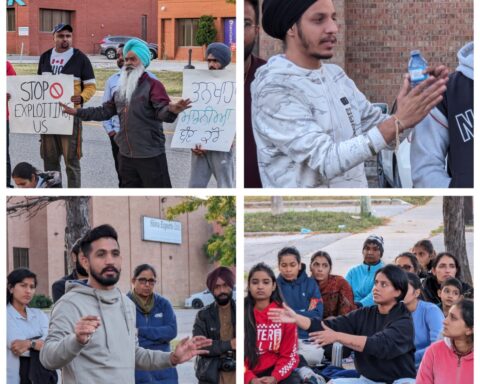The wait to get a long-term care bed in Ontario has increased significantly in the last six years. An individual on a wait-list to transfer from a hospital bed to a long-term care facility waits just over two months, while those who have applied for long-term care while living at home wait 116 days for placement.
Yet, a report released last week by the Wellesley Institute has found that seniors from ethnic communities in Toronto have even more difficulty getting placed in ethnic long-term care homes. Seniors waiting for an ethno-specific long-term care home wait for 18 months on average for placement into an ethno-specific long-term care home. The report noted that some of the longest waits for these high-demand services can be as high as eight years.
Further, the report found that income is a factor. Basic accommodations provided in a long-term care home are in high demand. Yet, the report finds that for people able to pay for more expensive private accommodation, the wait time decreases by nearly three months.
Pricey care
Long-term care can be pricey. In 2012, Michel Grignon and Nicole Bernier priced the cost of long term care for “24/7 assistance in an institution costs around $60,000 per person per year.”
And the prices are only likely to go higher.
[T]hose who have applied for long-term care while living at home wait 116 days for placement.
People looking for long-term care services have high needs. In addition to providing living support for individuals, staff care for people with physical limitations, helping them get up from a bed or chair, eating, and using the bathroom. With higher than average rates of dementia, depression and chronic diseases such as diabetes, heart conditions and arthritis, these homes require highly skilled staff to give the medical attention needed by the elderly population using these homes.
Ethno-specific long-term care homes are in high demand. They offer care in the same language as their residents, provide ethnic- and religion-sensitive food options and conduct social activities and entertainment specific to the community they serve.
The ethnic familiarity provided by these homes are important.
Happier and healthier
The report notes that elderly individuals in ethno-specific long-term care homes are happier and healthier, “feeling less social isolation, lower rates of depression, and fewer falls and hospitalizations.”
Unfortunately, the limited access to these homes is only getting worse.
While, the ethnic population has grown due to increased immigration in the Greater Toronto Area, there hasn’t been a similar increase in bed numbers in ethno-specific long-term care homes. People in Canada are generally living longer than ever before, increasing overall demand for long-term care. This is good news overall, but those who would have normally stayed at home in their old age are now requiring more specialized medical attention.
Cultural acceptance
Finally, there is more cultural acceptance in immigrant communities for long-term care. In some ethnic communities, there is an expectation that children will take care of their elders into old age. Yet, attitudes within the community have shifted amongst second and third generation immigrants. And the evidence that people have an improved quality of life in long-term care has resulted in less stigma and increased demand.
[A]ttitudes within the community have shifted amongst second and third generation immigrants.
There are a few ways that immigrant families can prepare for long-term care needs in the future. One option is long-term care insurance, which could help offset future costs for families. Further, governments could consider supporting a universal insurance program for long-term care that could share costs amongst Canadians.
Finally, investments in long-term care would be key to ensuring the future of our seniors. Even more than governments, entrepreneurs could be encouraged to consider investments into the development of long-term care, especially for immigrant communities that do not currently have a place to go in their old age. While there are homes specific to the Chinese, Italian, Greek, Polish and Ukrainian communities, other immigrant groups will inevitably require these services.




